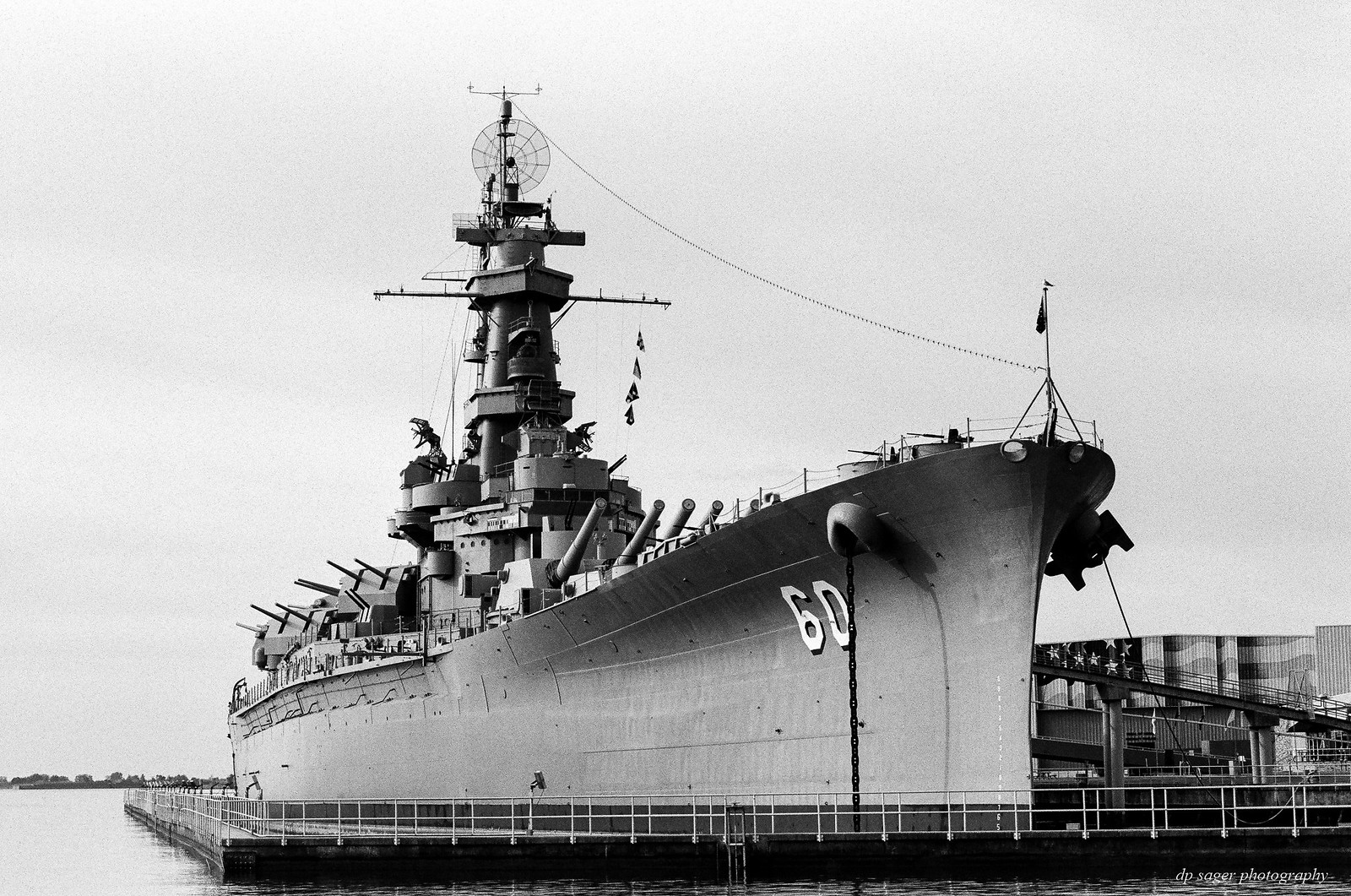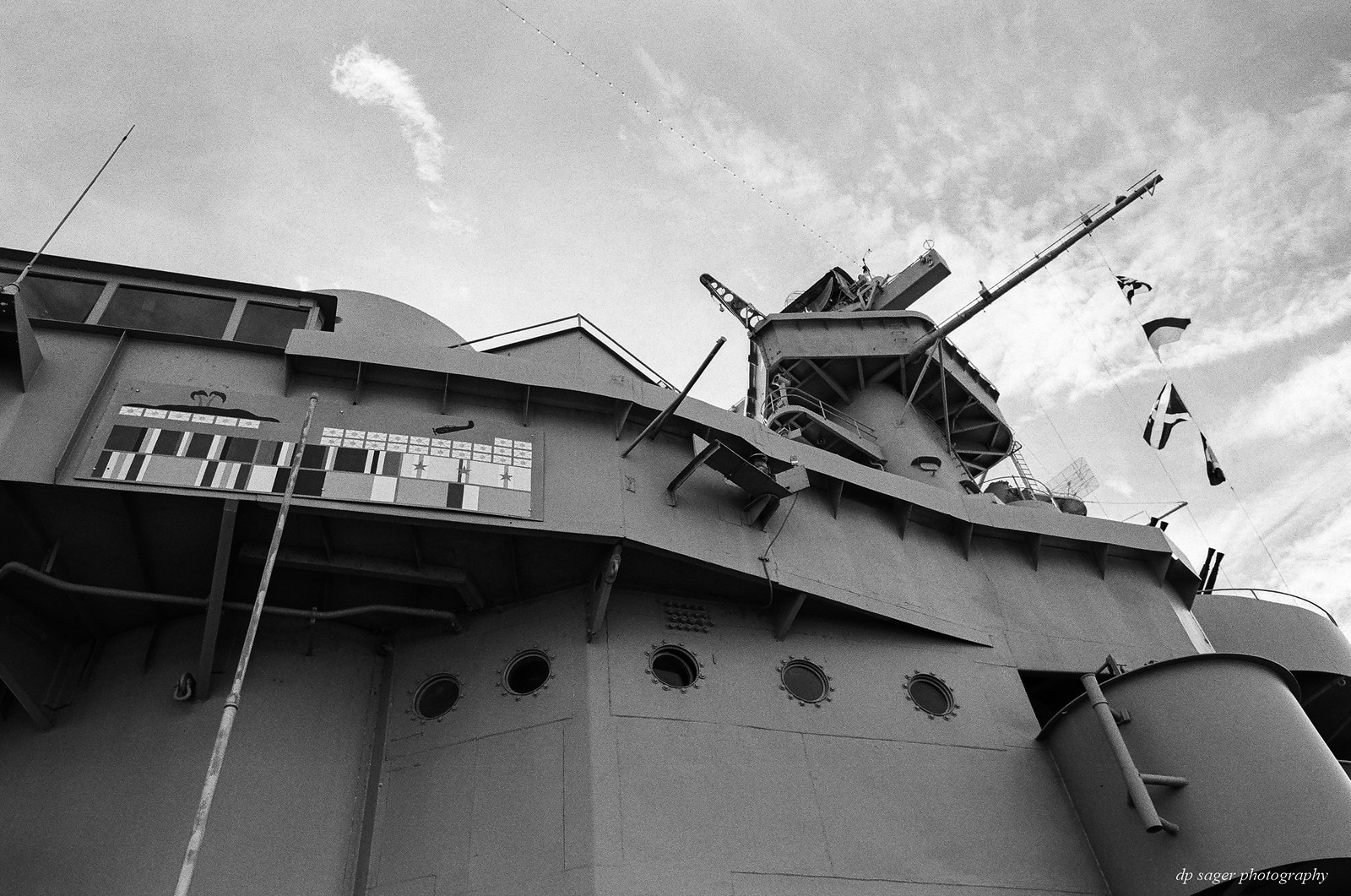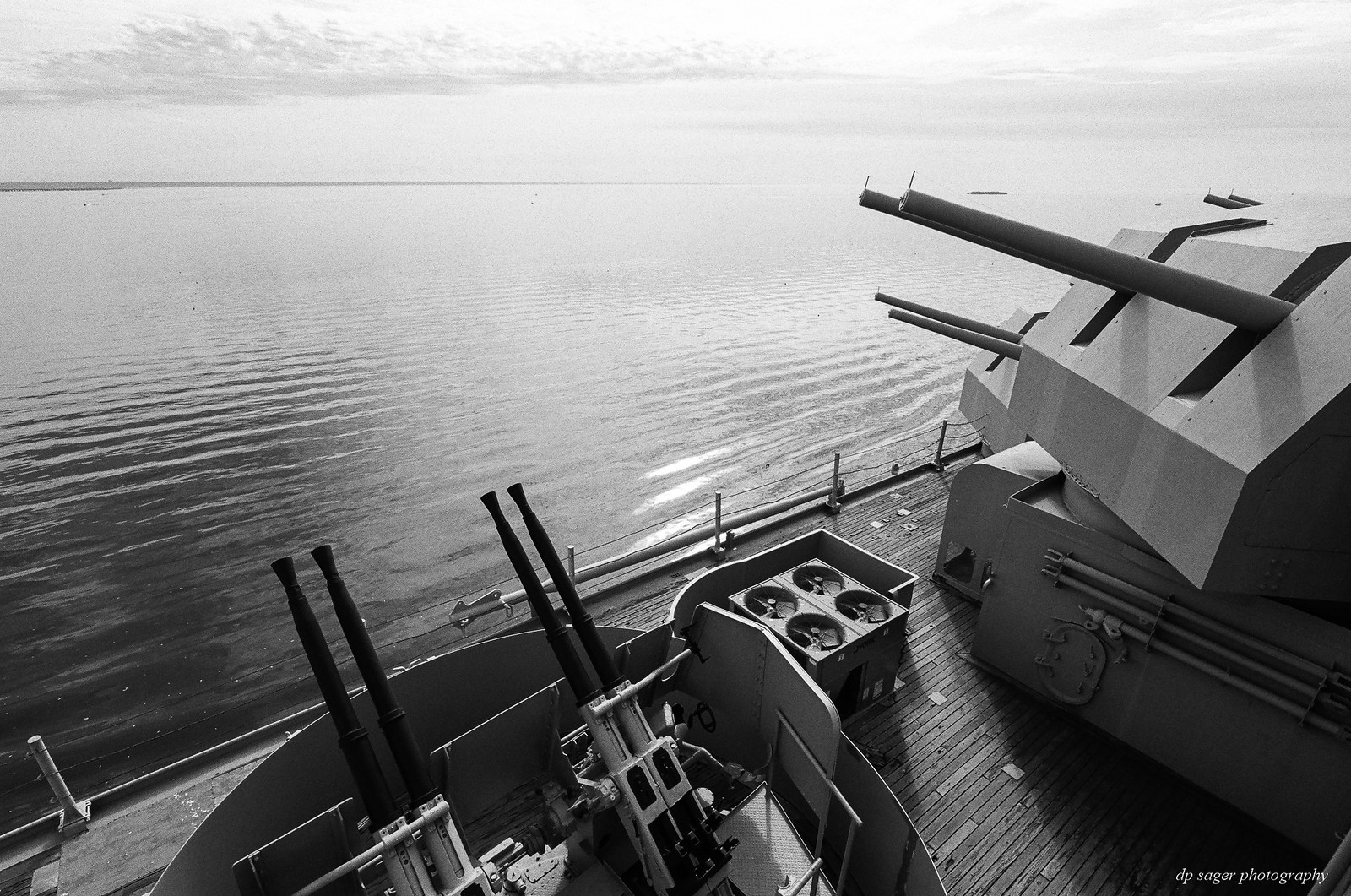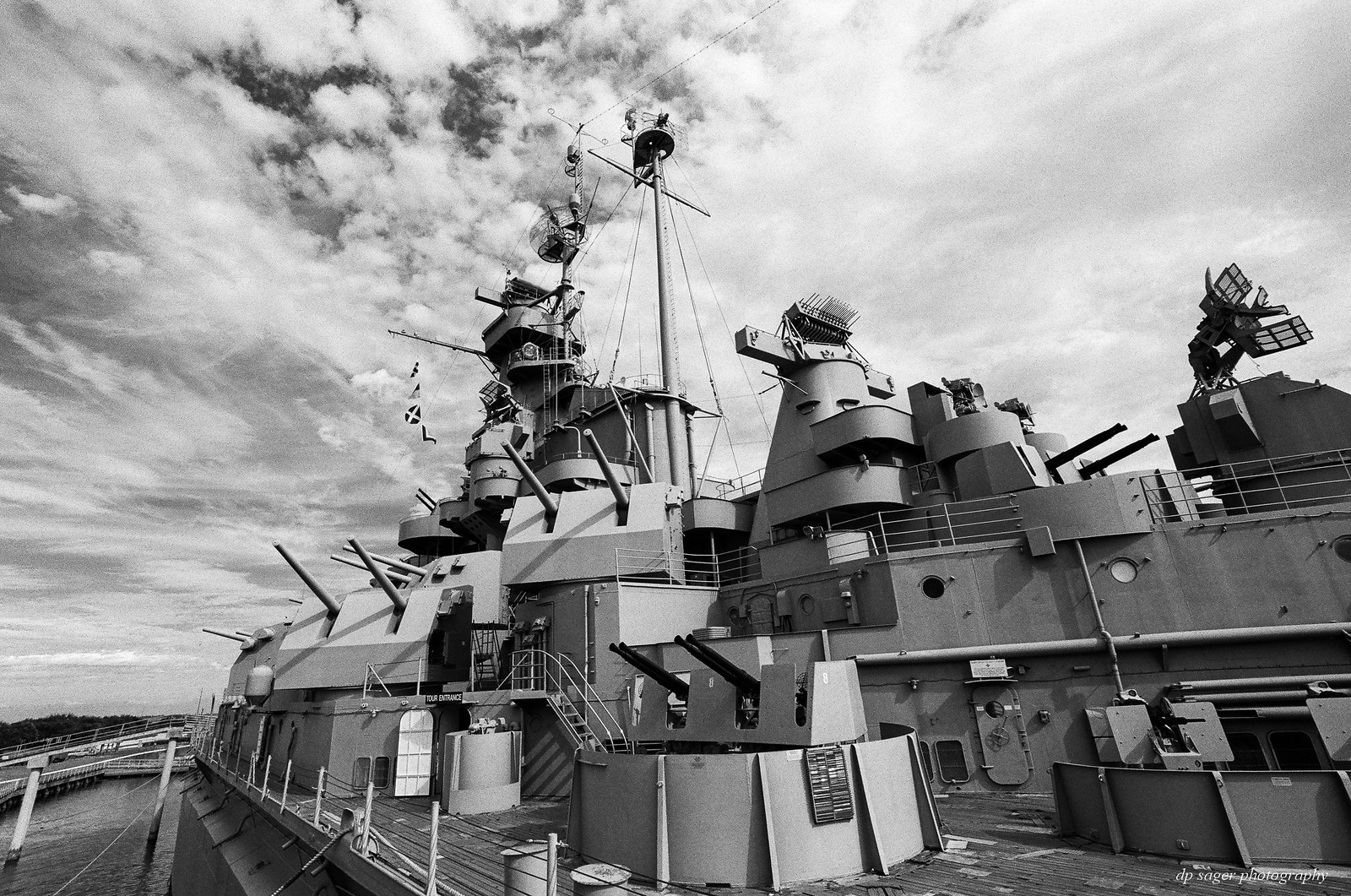USS Alabama - The Mighty A
Jan 7, 2020 08:04:36 #
The USS Alabama (BB-60) is a retired WWII battleship, now preserved as a museum ship in Mobile Bay, Alabama.
Battleship Memorial Park
Mobile, AL
Nov 2019
USS Alabama by Paul Sager, on Flickr

The Alabama was the fourth and final member of the South Dakota class of fast battleships built for the United States Navy in the 1930s. The keel for Alabama was laid down on 1 February 1940 at the Norfolk Navy Yard. She was launched on 16 February 1942. She was commissioned just six months later on 16 August.
USS Alabama

Alabama was 680-feet long overall and had a beam of 108-feet and a draft of 35-feet. She displaced 37,970 long tons (38,580 t) as designed and up to 44,519 long tons (45,233 t) at full combat load. Her main battery was nine 16-inch (45 caliber) Mark 6 guns in three triple-gun turrets on the centerline, two of which were placed in a superfiring pair forward, with the third aft. Although available for ship-to-ship combat, the Mark 6 guns across the fleet were used primarily for shore bombardment in the Pacific.
The 16-inch armor-piercing (AP) shells weighed 2,700 pounds and the guns could hit targets 21-miles distant, and could be fired at 2 rounds per minute. Barrel life, the approximate number of rounds a gun could fire before needing to be relined or replaced, was 395 firings using the heavier AP shells.
USS Alabama

Alabama's first deployment came in April 1943 with the temporary assignment to the British Home Fleet to reinforce the Allied naval forces escorting Arctic convoys to the Soviet Union. At the time, the British had sent several capital ships to the Mediterranean Sea to support the Allied invasion of Sicily, stripping away forces necessary to counter the German naval strength in Norway, most significantly the German battleship Tirpitz. The Allies hoped to lure out Tirpitz to sink her, but the Germans took no notice of the ships and remained in port. Alabama returned to Norfolk in August '43 for an overhaul in preparation for operations against Japanese forces in the Pacific Theater.
USS Alabama

As the floating home to a crew of 2,500, the battleship escorted U.S. aircraft carriers and participated in the major Pacific campaigns of island hopping through the end of the war, culminating with Alabama leading the American Fleet into Tokyo Bay on September 5, 1945. The 'Mighty A' earned nine Battle Stars for meritorious service during her three year tenure as the 'Heroine of the Pacific'.
B&W images shared in this post come from the Canon EF 16-35mm f/4L IS with an EOS 1v film camera using Kodak Tri-X 400, and red and orange filters. Processing and scanning of the film was completed by North Coast Photography Services of Carlsbad, CA. The resulting JPEG scans were further processed in Lightroom 6.
USS Alabama

Alabama was decommissioned on 9 January 1947 at the Naval Station in Seattle and assigned to the Pacific Reserve Fleet, stationed in Bremerton, Washington. Plans were made to modernize Alabama and the other ships of her class should they be needed for future active service. In the 1950s, the U.S. Navy considered various plans to replace the big guns with guided-missile launchers, but none of several modernization ideas were implemented after the cost analysis.
On 1 June 1962, Alabama was stricken from the Naval Vessel Register for disposal. The State of Alabama passed a bill to establish the "USS Alabama Battleship Commission" with a view toward preserving the battleship as a museum ship. Governor George Wallace signed the law on 12 September 1963, and the commission set about raising funds to acquire the ship; ultimately around $800,000 was raised, of which an eighth came from children in the state, the rest coming primarily from corporate donations.
USS Alabama

On 16 June 1964, the Navy awarded the ship to her namesake state, with a provision that the Navy would retain the ability to recall the ship to service in the event of an emergency. She was towed from Seattle to Mobile via the Panama Canal, and opened as a museum ship on 9 January 1965. In the early 1980s, when the Navy reactivated the four Iowa-class battleships, parts were cannibalized from Alabama and the other preserved battleships, including Massachusetts and North Carolina, to restore the Iowas to service. Engine room components that were no longer available in the Navy's inventory were the primary materials removed from the other ships.
USS Alabama

These images are sized to fill your wide-screen display. Try using <F11> to maximize your browser window for the full effect. If the images overshoot your display, such as a laptop, just click on the image or the URL link and they'll resize to your screen from the host Flickr site. You can click a bit further into the image details on the Flickr page, if desired. EXIF data is available from the host Flickr pages as well. On the Flickr site, use your <L>key for Large and the <F11> for the full-screen.
Battleship Memorial Park
Mobile, AL
Nov 2019
USS Alabama by Paul Sager, on Flickr

The Alabama was the fourth and final member of the South Dakota class of fast battleships built for the United States Navy in the 1930s. The keel for Alabama was laid down on 1 February 1940 at the Norfolk Navy Yard. She was launched on 16 February 1942. She was commissioned just six months later on 16 August.
USS Alabama

Alabama was 680-feet long overall and had a beam of 108-feet and a draft of 35-feet. She displaced 37,970 long tons (38,580 t) as designed and up to 44,519 long tons (45,233 t) at full combat load. Her main battery was nine 16-inch (45 caliber) Mark 6 guns in three triple-gun turrets on the centerline, two of which were placed in a superfiring pair forward, with the third aft. Although available for ship-to-ship combat, the Mark 6 guns across the fleet were used primarily for shore bombardment in the Pacific.
The 16-inch armor-piercing (AP) shells weighed 2,700 pounds and the guns could hit targets 21-miles distant, and could be fired at 2 rounds per minute. Barrel life, the approximate number of rounds a gun could fire before needing to be relined or replaced, was 395 firings using the heavier AP shells.
USS Alabama

Alabama's first deployment came in April 1943 with the temporary assignment to the British Home Fleet to reinforce the Allied naval forces escorting Arctic convoys to the Soviet Union. At the time, the British had sent several capital ships to the Mediterranean Sea to support the Allied invasion of Sicily, stripping away forces necessary to counter the German naval strength in Norway, most significantly the German battleship Tirpitz. The Allies hoped to lure out Tirpitz to sink her, but the Germans took no notice of the ships and remained in port. Alabama returned to Norfolk in August '43 for an overhaul in preparation for operations against Japanese forces in the Pacific Theater.
USS Alabama

As the floating home to a crew of 2,500, the battleship escorted U.S. aircraft carriers and participated in the major Pacific campaigns of island hopping through the end of the war, culminating with Alabama leading the American Fleet into Tokyo Bay on September 5, 1945. The 'Mighty A' earned nine Battle Stars for meritorious service during her three year tenure as the 'Heroine of the Pacific'.
B&W images shared in this post come from the Canon EF 16-35mm f/4L IS with an EOS 1v film camera using Kodak Tri-X 400, and red and orange filters. Processing and scanning of the film was completed by North Coast Photography Services of Carlsbad, CA. The resulting JPEG scans were further processed in Lightroom 6.
USS Alabama

Alabama was decommissioned on 9 January 1947 at the Naval Station in Seattle and assigned to the Pacific Reserve Fleet, stationed in Bremerton, Washington. Plans were made to modernize Alabama and the other ships of her class should they be needed for future active service. In the 1950s, the U.S. Navy considered various plans to replace the big guns with guided-missile launchers, but none of several modernization ideas were implemented after the cost analysis.
On 1 June 1962, Alabama was stricken from the Naval Vessel Register for disposal. The State of Alabama passed a bill to establish the "USS Alabama Battleship Commission" with a view toward preserving the battleship as a museum ship. Governor George Wallace signed the law on 12 September 1963, and the commission set about raising funds to acquire the ship; ultimately around $800,000 was raised, of which an eighth came from children in the state, the rest coming primarily from corporate donations.
USS Alabama

On 16 June 1964, the Navy awarded the ship to her namesake state, with a provision that the Navy would retain the ability to recall the ship to service in the event of an emergency. She was towed from Seattle to Mobile via the Panama Canal, and opened as a museum ship on 9 January 1965. In the early 1980s, when the Navy reactivated the four Iowa-class battleships, parts were cannibalized from Alabama and the other preserved battleships, including Massachusetts and North Carolina, to restore the Iowas to service. Engine room components that were no longer available in the Navy's inventory were the primary materials removed from the other ships.
USS Alabama

These images are sized to fill your wide-screen display. Try using <F11> to maximize your browser window for the full effect. If the images overshoot your display, such as a laptop, just click on the image or the URL link and they'll resize to your screen from the host Flickr site. You can click a bit further into the image details on the Flickr page, if desired. EXIF data is available from the host Flickr pages as well. On the Flickr site, use your <L>key for Large and the <F11> for the full-screen.
Jan 7, 2020 08:10:48 #
My wife and I toured that around 1981, VERY impressive.
Beautiful shots, interesting history.
Beautiful shots, interesting history.
Jan 7, 2020 08:10:54 #
Jan 7, 2020 08:22:44 #
CHG_CANON wrote:
The USS i Alabama /i (BB-60) is a retired WWII b... (show quote)
Great shots, great ship! We toured the USS Iowa (museum ship) in Long Beach/San Pedro, California. Sister to the Missouri. Wow, impressive! Still being restored slowly. There is not the funding needed.
Jan 7, 2020 08:31:15 #
Thanks for sharing, Paul. Interesting history for the old battle wagon and nice shots. The Alabama was only in commission for 5 years until 1947, but the navy held on to her looking for other mission possibilities until 1962. In today’s navy, ship designs and construction methods are more modular and lend themselves to later modernization. Back in the day, these ships had design paper but in fact, each was to a large extent a custom build. If the navy wanted to modify them for bigger firepower or even change their mission, it was potentially a huge undertaking that began with designers documenting the “as is” before any work could continue. Unlike today, configuration control was not a high priority except at the component level.
Jan 7, 2020 08:38:22 #
Your photos are amazing! We spent several hours exploring the USS Alabama and also the USS Drum submarine a few years ago. Thanks for sharing.
Jan 7, 2020 08:39:41 #
Jan 7, 2020 08:44:36 #
I saw the Alabama summer '64, pier 1 Cristobal Panama.
She didn't look quite this good then. Toured the Alabama
twice in Mobile. I no longer have the pix nor can I fit into
the 16 inch gun turrets.
She didn't look quite this good then. Toured the Alabama
twice in Mobile. I no longer have the pix nor can I fit into
the 16 inch gun turrets.
Jan 7, 2020 08:44:41 #
Jan 7, 2020 09:08:23 #
47greyfox wrote:
Thanks for sharing, Paul. Interesting history for ... (show quote)
Thank you 47greyfox! Battleships were already obsolete by the 1940s, but the visionaries calling for only aircraft carriers were still few in number while the shipyards and existing contracts provided jobs in the Great Depression. My Grandfather and Father were in the Navy, but not these types of ships. I can't imagine the life, but the operators of the Alabama and Drum have provided details of so many aspects of the everyday life on the ships to give some sense of it.
Jan 7, 2020 09:08:36 #
dave.speeking wrote:
I saw the Alabama summer '64, pier 1 Cristobal Panama.
She didn't look quite this good then. Toured the Alabama
twice in Mobile. I no longer have the pix nor can I fit into
the 16 inch gun turrets.
She didn't look quite this good then. Toured the Alabama
twice in Mobile. I no longer have the pix nor can I fit into
the 16 inch gun turrets.
Thank you Dave! I was amazed at all the places you go / get into within the ship, including the gun turrets. I could barely fit into several of them ...
Jan 7, 2020 09:10:16 #
Thank you Bill, Clark, Mike, Jan, Pat, Joe! Prior, I'd been only on the Missouri for battleships. I wasn't expecting much for the Alabama and was amazed by the condition of the ship and all the information they've provided about nearly every area of the ship you could access, top to bottom. The Drum is in great condition too, but on such a smaller scale compared to the battleship. Both are highly recommended if you're in the Mobile area.
Jan 7, 2020 09:14:59 #
CHG_CANON wrote:
Thank you Dave! I was amazed at all the places you go / get into within the ship, including the gun turrets. I could barely fit into several of them ...
You KNOW, Paul.... you could have stayed the night.... 🥴
https://www.ussalabama.com/plan-your-visit/programs/overnight-stay/
Jan 7, 2020 09:21:22 #
47greyfox wrote:
You KNOW, Paul.... you could have stayed the night.... 🥴
https://www.ussalabama.com/plan-your-visit/programs/overnight-stay/
https://www.ussalabama.com/plan-your-visit/programs/overnight-stay/
LOL. I did find the overnight bunk area and the Boy Scout sign. But, I was due in Tallahassee the same night of my tour ...
Jan 7, 2020 09:22:48 #
Great pictures. Great history. Especially great courage for those who built and sailed The Mighty A.
If you want to reply, then register here. Registration is free and your account is created instantly, so you can post right away.







